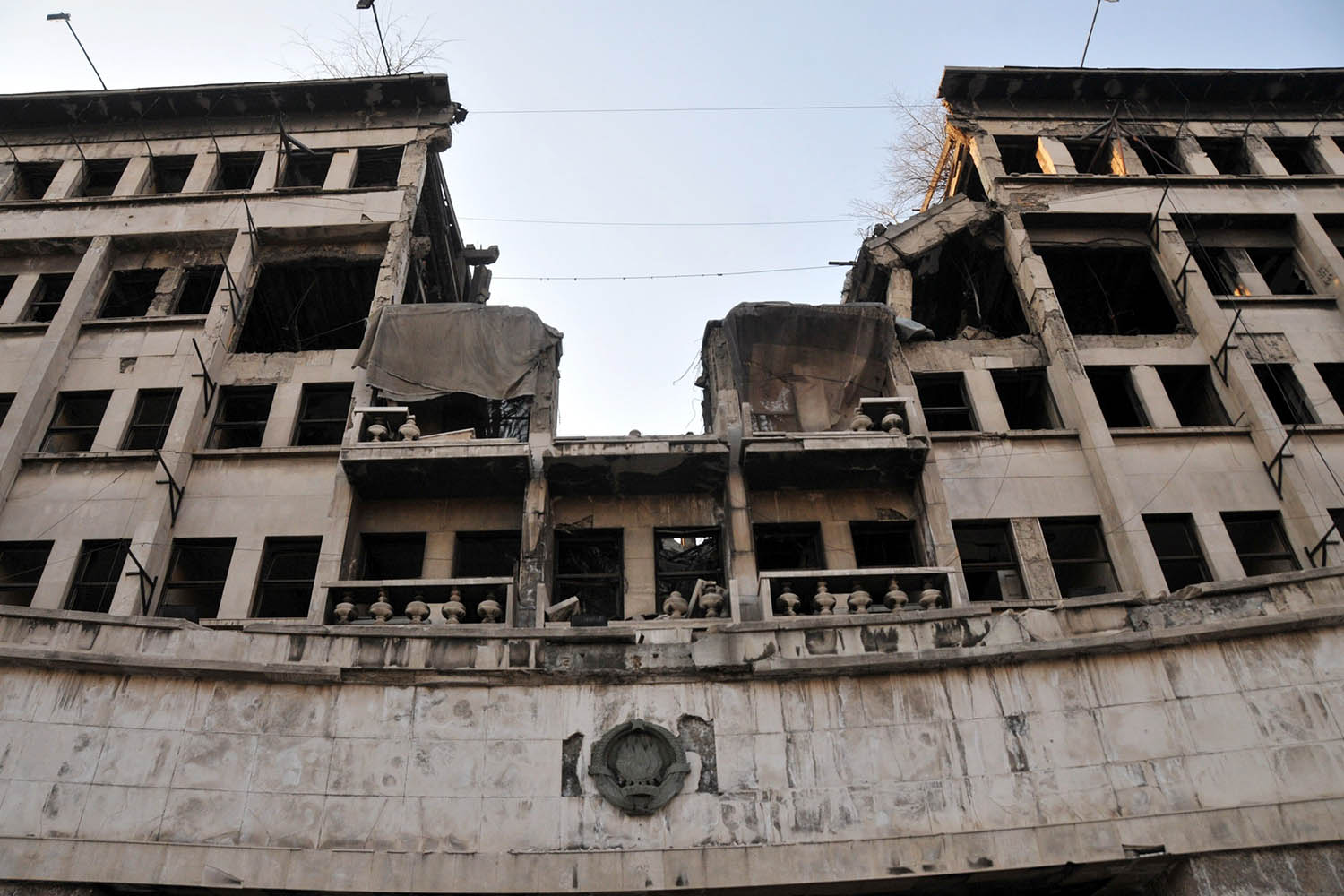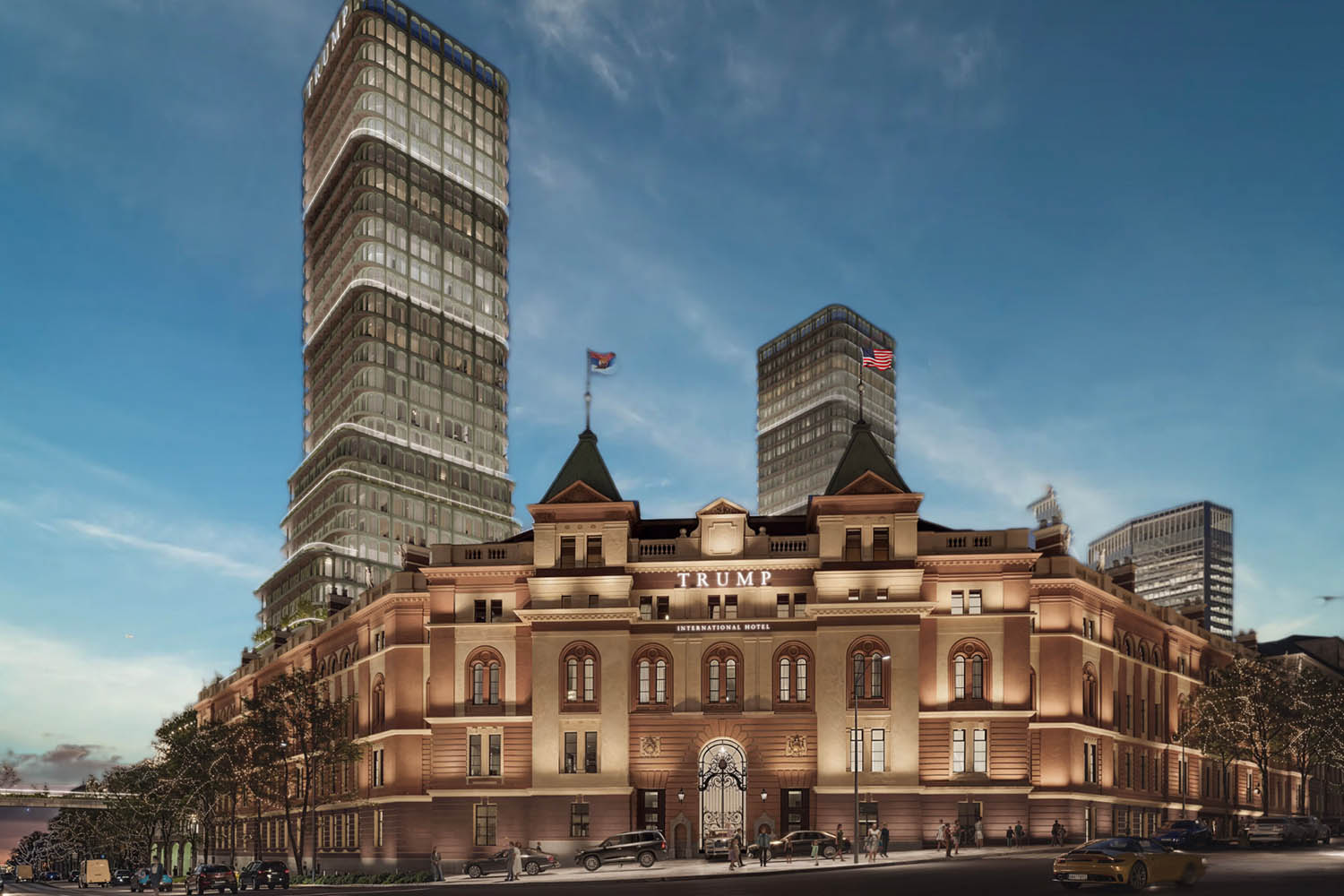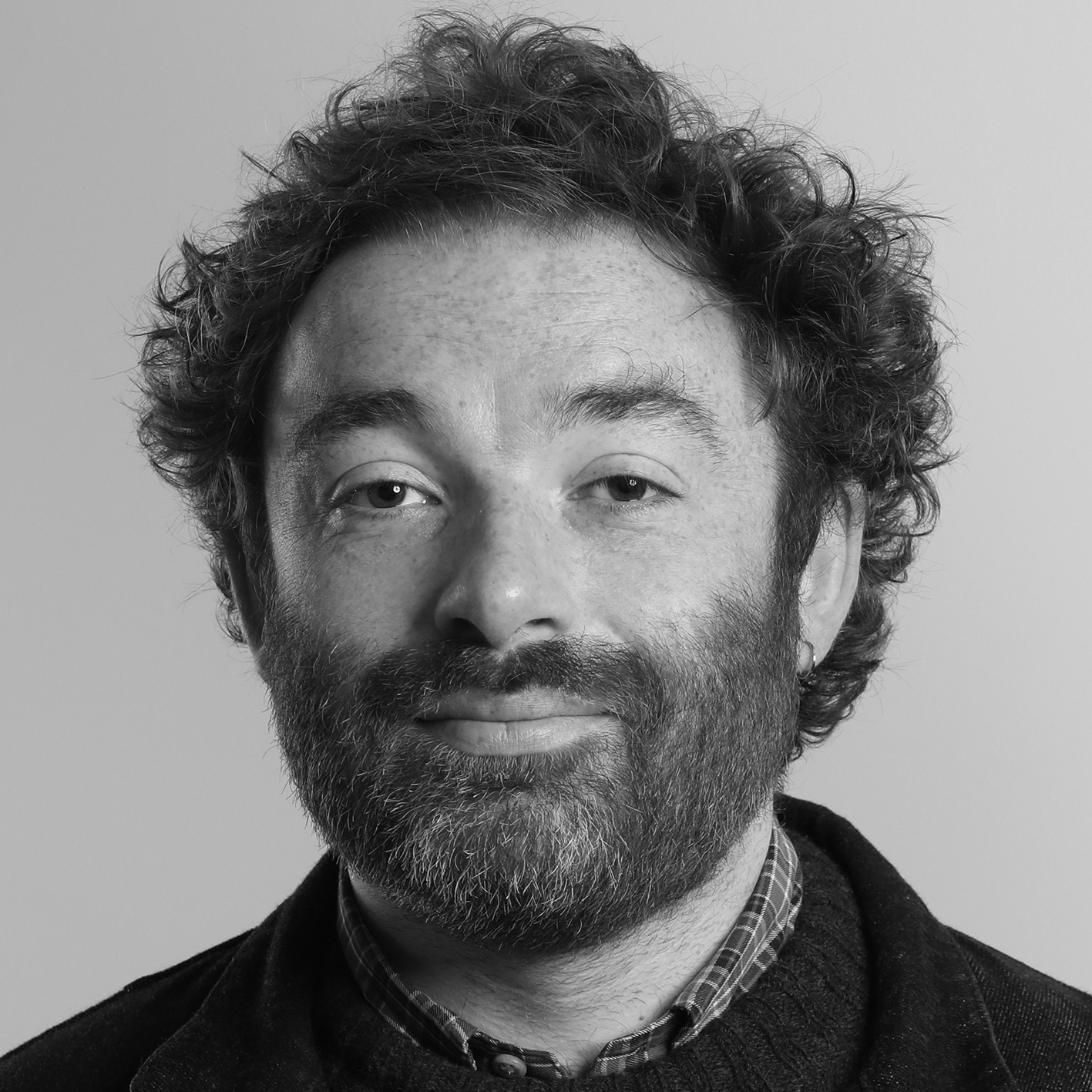The shell of the former Yugoslav ministry of defence in central Belgrade carries a different resonance depending on who you talk to. In 1999, Nato planes bombed the complex as part of the US-led campaign to halt the Kosovo war. For many Serbs, there is little room for ambiguity. The hollowed-out buildings – a tangle of gaping holes and half-obliterated concrete – stand as a symbol of western aggression and hypocrisy, a monument to the troubled, still contested recent past.
For 22-year-old Nikolina Djordjevic, a student of conservation and restoration at the University of Belgrade, the issue has nothing to do with the building’s past – and everything to do with its possible future. Late last year, a flurry of jolly press releases announced a deal with a company called Affinity Global – whose founder happens to be Donald Trump’s son-in-law, Jared Kushner. Affinity Global would redevelop the old ministry of defence building into a £370m luxury hotel and apartment complex, with the letters TRUMP emblazoned across the top.
The 99-year lease would, according to the most reliable independent sources, come at no upfront cost. A glossy promotional website has since been launched, showing a succession of CGI apartment towers rocketing into the Belgrade skyline. The Trump hotel squats in the foreground, with a fleet of luxury cars parked outside, the American flag flying proudly above the entrance.
For Djordjevic, the idea that such a place, even in its current state, could be demolished to make way for Europe’s first Trump International Hotel was almost impossible to comprehend. It was not simply crass, but an ugly insult to the past. “That it can be given away as a present… it is almost like a Greek tragedy,” she said, standing yards from the buildings on a sweltering morning in late June.

The former Yugoslav ministry of defence building, bombed by Nato in 1999
Over the past nine months, life in Serbia has been defined by a wave of increasingly intense national protest. These began in November, when 16 people were killed by a freshly renovated roof canopy that collapsed at the train station in Novi Sad, Serbia’s second-largest city. Demonstrations were led by students like Djordjevic and her peers, who blamed the Novi Sad disaster on rampant government corruption. They were soon joined by a cross-section of Serbian society, ranging from disaffected teachers and civil servants, to agricultural workers in the north and east.
In March, more than 300,000 demonstrators gathered in Belgrade for what independent observers have labelled the country’s largest ever protest. Permanent barricades have been erected in central Belgrade, including outside the bomb-damaged former ministry of defence. The sound of screeching whistles have become ubiquitous, along with slogans such as Pumpaj! (“pump it”) and Corruption Kills, often daubed against a vivid red handprint. Though overwhelmingly peaceful, a mass demonstration in June saw protesters clash with police, leading to dozens of arrests.
Chief among protesters’ demands has been the removal of the authoritarian government led by President Aleksandar Vučić, whose Serbian Progressive Party (SNS) has been in power since 2012. The January resignation of his ineffectual prime minister, Miloš Vučević, did nothing to quell unrest. But despite months of pressure, Vučić – a hard-right nationalist who served in a succession of senior roles under the brutal rule of Slobodan Milošević in the 1990s – has refused to budge. He has instead suggested that the protests are the work of meddling western intelligence agencies, while denying that the deaths in Novi Sad arose from corruption .
In recent months, the row over the proposed Trump Tower has added to pressure on Vučić, who has closely aligned himself with the new US administration. Donald Trump Jnr has made several visits to Serbia in recent months, even interviewing President Vučić in March for his podcast. For his part, Vučić has settled on a note of slightly plaintive pragmatism. “It’s important to overcome the burden from 1999,” he told the BBC in June. “We are ready to build better relations with the US – I think that is terribly important for this country.”
‘There is nobody in the opposition parties who supports this. Everyone from civil society is against it’
Zdravko Ponoš, politician
For those opposed to Trump Tower, the issue could not be more straightforward. “It is a symbol of the regime dealing with the country as if it was their own private property,” said Sneska Quaedvlieg-Mihailović, the secretary-general of the Europa Nostra foundation, Europe’s top cultural heritage organisation.
The buildings should not be obliterated, she argued over coffee at a bar in Belgrade city centre, because an influential investor wants to build a wildly unsuitable new complex on the site. For Quaedvlieg-Mihailović and many other observers, the proposed Trump Tower should be viewed in the same dismal context as the Belgrade Waterfront, a vast, much maligned Emirati-owned retail and residential complex, which squats on the banks of the Sava river, a five-minute drive from the former ministry of defence. With its half-finished, quarter-empty luxury apartments, high-end restaurants and 42-storey Belgrade Tower complex, it has been cited as a prime example of foreign capital unilaterally benefiting from Serbian public property.
Even his staunchest detractors concede that President Vučić is a canny operator. By granting lithium to the EU, copper to China and prime Belgrade real estate to Trump-affiliated American investors, Vučić has so far managed to avoid more than the mildest censure from abroad.
“Unfortunately, this strategy works for him,” said Zdravko Ponoš, leader of Serbian Centre, formed after the 2022 presidential election in which he finished second as head of an anti-Vučić centre-right coalition. “[Some] important world players look at [Serbia] as the backyard of Europe, rather than real Europe. So you buy things for cheap here and sell them for more… because the government is corrupted.”
For Ponoš, a retired general and one-time chief of general staff for the Serbian armed forces, the ministry of defence complex conjured particularly strong feelings. “There is nobody in the opposition parties who is willing to support it. There is no reason to support it. Everyone from civil society is against it.” This was not, he added, because of an innate Serbian nimbyism. “It should be refurbished into some other kind of state institution, not necessarily a military one.”
It was an idea picked up by Quaedvlieg-Mihailović. “There are all sorts of potential [uses] for it. Ideas that layer in the story of the building. You can revitalise and restore it [rather than] destroy.”
Like so much in contemporary Serbian society, nothing about the future of the project is assured. The building had enjoyed protected heritage status since 2005, until it was hurriedly revoked last year, paving the way for the land to be granted to Affinity Global. In May, police arrested the official responsible for the revocation. Then came a surreal flurry of accusations and counterclaims. Prosecutors alleged that Goran Vasić, acting director of the Republic Institute for the Protection of Cultural Monuments, had confessed to forging documents that had been used to revoke the building’s protected status.
Vučić, meanwhile, denied the project has run into any issues. At a summit with European leaders in Tirana, he poured scorn on the notion that anything untoward had taken place.
The website for Trump Tower Belgrade promises that pre-sales for the luxury apartments will begin this summer. But given the protests and the lack of progress, that may be optimistic. “If they are clever enough, they will give up,” said Ponoš. “It is too unpopular. Too sensitive.”
Unpopularity is a subject the embattled Vučić has grown to understand over the past year. Last weekend, 140,000 protesters took to the centre of Belgrade in the largest single demonstration since March. There is the sense that a new, more disquieting phase might be beginning.
After months of unrelenting protest – whether against Trump Tower or th e basic trustworthiness and competence of the Serbian administration – Vučić’s grip on power is as firm as ever. It is unclear what, if anything, might loosen it.
High five
Four other controversial Trump Towers around the world (and a fifth that didn’t happen)
Trump International Hotel & Tower Baku
The 33-storey complex in Azerbaijan’s capital was beset with chronic delays and allegations of corruption throughout its fraught, 14-year-long construction. It finally opened in 2022 as The Ritz-Carlton Baku Hotel after the Trump Organization had pulled out following the 2016 US presidential election. A spokesperson described this departure as “housecleaning”.
Trump Towers Pune
A pair of 23-storey towers that opened in 2017 in the Maharashtra metropolis, this was one of two Trump Tower-branded projects built for the lucrative high-end India property market. An investigation was undertaken concerning discrepancies in land documents related to the project.
Trump Tower Punta del Este
A 26-storey residential building in Uruguayan coastal city. Construction was held up in the early 2010s due to poor sales. It has the distinction of being the last Trump Tower built following his first presidential victory.
Trump Towers Istanbul
Opened in 2012, it is home to the only “collective wine cellar” in Turkey. Has been the object of sporadic controversy as US-Turkey relations have fluctuated. In 2018, an opposition politician implored the Erdoğan administration to seize the buildings for the Turkish state. The request was not granted.
Trump Tower Moscow
Many Trump Towers have failed to materialise. None are as eye-catching as the proposed Moscow offering. The dream of a 15-storey luxury hub in the Russian capital was permanently axed in November 2018 after Trump’s ex-lawyer Michael Cohen admitted lying to Congress about the plans.
Photograph by Medin Halilovic/Anadolu Agency/Getty

